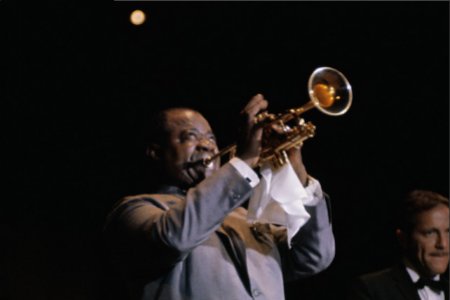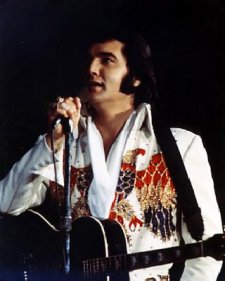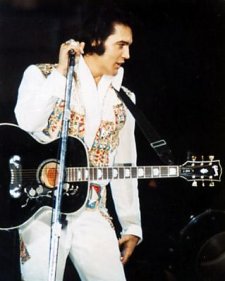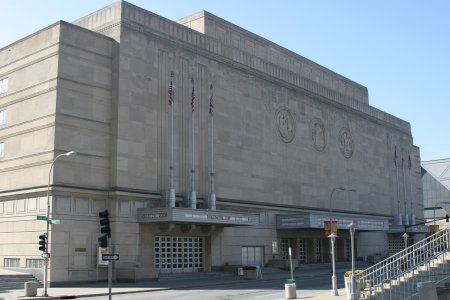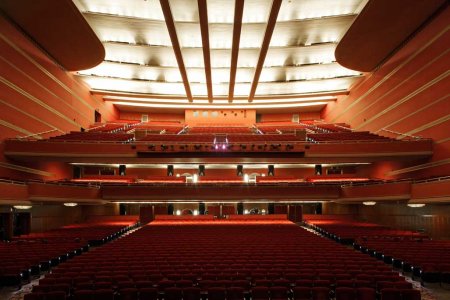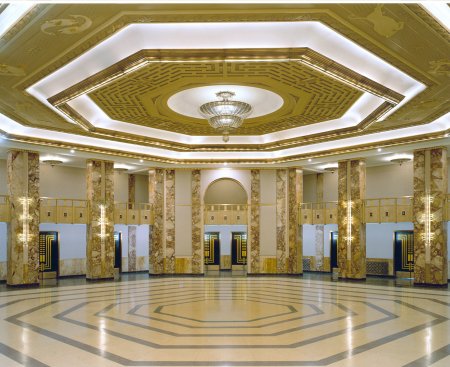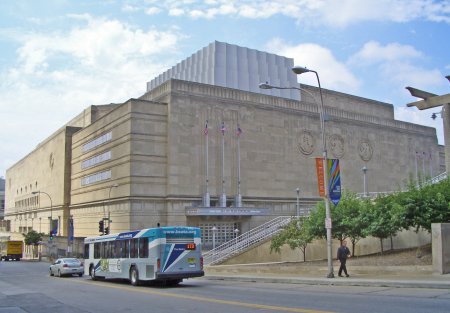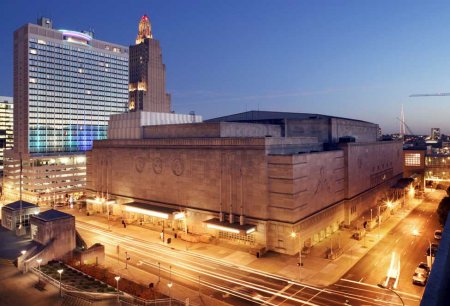 |
Municipal Auditorium
The Municipal Auditorium in Kansas City, Missouri was built in 1934 as part of the "Ten Year Plan" championed by various local politicians including (Senator) Harry S. Truman and Thomas Pendergast.1 The "TenYear Plan" was a coordinated effort to help Kansas City organize city improvements. It was officially launched in 1931 during the mayoral administration of Bryce Smith, with Henry F. McElroy as City Manager, although there had been talk of such a plan by other mayors.2
It was the largest of a group constructed under the "plan" and occupies the square block bounded by 13th, 14th, Wyandotte and Central streets in downtown Kansas City. Other buildings in the plan included the Kansas City City Hall and the Kansas City branch of the Jackson County Courthouse.1 Construction of the Municipal Auditorium provided 2,000 jobs and cost about $6.5 million, including $1,135,000 from the Public Works Administration.3
When the building opened in 1935, it was called by the Architectural Record "one of the 10 best buildings of the world that year." 1 Literature at the time of its opening noted that no expense was spared on the interior decor and accommodations. Color schemes, lighting, furniture, artwork and a wealth of art deco design elements were carefully chosen to give it a finished, even lavish appearance.4 The art deco architecture features were a characteristic design by Hoit Price & Barnes which also designed the Kansas City Power and Light Building at about the same time. The other architect firm in the design Gentry, Voskamp & Neville was to design the Truman Library. It replaced Convention Hall which was directly across the street, as was the Robert E. Lee Hotel built in 1925 at 13th and Wyandotte Streets.1
The auditorium was designed to accommodate the broadest possible range of events -- conventions, athletic events, exhibitions, industrial shows, concerts, plays or lectures, big or small. The building includes three large spaces: the multi-purpose arena, the Music Hall and an elegant little ballroom known as the Little Theater, each added in 1936. Each space is easily accessible through its own lobby, complete with coat-check room, box office and marquee. Events were held in each of the facilities simultaneously, without conflict.4
The arena has seating for 10,500 people (7,316 permanent seats, 2,405 seats on risers plus capacity for 1,000 theater-style on main floor). It has a 92-foot ceiling -- high enough for a trapeze artist -- and a 24,000-square-foot floor built of oak two-by-fours strong enough to support an elephant. The arena measures 301 by 291 feet, and the oval floor is 130 by 220 feet. There are no pillars or posts to obstruct patrons' view.4
The Auditorium was packed with people when it was formally dedicated on October 13, 1936. President Franklin D. Roosevelt was in attendance and the keynote speaker on this occasion.3
Nearly every U.S. president or would-be president since the 1930s has taken his campaign to the Municipal Auditorium. It has been the scene of everything from political conventions and basketball championships to philharmonic performances and circuses.3
In April of 1954, only 29 years after its construction, the Hotel Robert E. Lee situated across 13th Street from the Auditorium was torn down. During demolition, the eighth and ninth floors collapsed into the street pelting two passing motorists and narrowly missing four pedestrians. No one was injured.5 The block was replaced with a park and underground parking garage.
Eddie Fisher, (husband to Debbie Reynolds at the time) was a pre-Rock and Roll big band vocalist. He had been drafted into the US Army in 1951 and served a year in Korea. He later was the official vocal soloist for the Army Band, a role replaced by Faron Young after his discharge in 53. Fisher's strong and melodious tenor made him a teen idol and one of the most popular singers of the early 1950s. He had seventeen songs in the Top 10 on the music charts between 1950 and 1956 and thirty-five in the Top 40.6
On November 13, 1954, hundreds of fans stood for hours outside the Municipal Auditorium to gain entrance to Eddie Fisher's free concert with the Kansas City Philharmonic Orchestra. When they got in, and Fisher appeared, he was kept busy fighting for room and breath, signing autographs as he and his police escort pushed toward the platform.3
In May of 1956, Elvis, Scotty, Bill and DJ made an appearance for one (incomplete) performance in Kansas City at the Municipal Auditorium Arena. It is only a few blocks south of US 40. In what must have been haphazard, grueling drive for the band around the Mid West in the days before the Interstates, they had started earlier in the month in Wisconsin and Minnesota and had covered dates in Kansas, Missouri, Nebraska and Iowa. They had played the evening before in Sioux City and were now working their way easterly for the remaining shows that month.
As overwhelming as the crowd almost was for Eddie Fisher a couple of years earlier, the crowd for Elvis' appearance, though smaller, was, to quote the title of one of Elvis' songs, "Too Much." The review in the Kansas City Star the following day read:
From Kansas City, the band headed northeast for appearances at Detroit's Fox theater the next day.
On June 29, 1974, Elvis returned to perform in the two shows in the Municipal Auditorium. In addition to the long list of performers that have performed at the Arena, it has also had an impressive history with basketball over the years. The NCAA was headquartered in the Kansas City metropolitan area from 1951 until 1999. During its days in Kansas City, the Municipal Auditorium hosted nine Final Four basketball tournaments (three of the first four), the most of any venue.7
Starting in 1972, the Kansas City Kings played their first two seasons at the Auditorium, prior to moving to the new 19,500 seat Kemper Arena was built in 1974 to accommodate Kansas City's professional basketball teams. They returned for the majority of the 1979-80 season after the roof of Kemper Arena caved in on June 4, 1979, then by 1985 had moved to Sacramento.1
It has hosted the Mid-America Intercollegiate Athletic Association tournament since 2003, held every year in early March. When Kansas City hosts the Big 12 tournament, women's games take place here. It is currently home to the NAIA Men's Division I Basketball National Tournament. It was played here from 1937-1975, when it moved into Kemper, and has been home since the Tournament moved back to Kansas City from Tulsa in 2002. It is home to the University of Missouri–Kansas City Kangaroos basketball team. As of 2007, Municipal Auditorium had hosted more NCAA Men's Basketball Tournament games (83), regional finals (13) and Final Fours (9) than any other facility.1
Today, the Municicpal Auditorium is part of the new Kansas City Convention and Entertainment Facilities, which includes the adjacent H. Roe Bartle Hall, a three-story Conference Center. The Center has 388,800 square feet of column-free exhibit space on one floor plus another 55,000 square feet of additional space on two levels, 45 meeting rooms and a 46,000 square foot Grand Ballroom. Municipal Auditorium connects directly to Level 2 of the Conference Center, to the underground parking garage and downtown hotel walkway system.8
With seating for 2,400, the Art Deco Music Hall offers all the amenities for world-class productions-orchestra pit, chorus dressing rooms, star dressing rooms, green room, and high-quality lighting and sound systems. It is used for special convention presentations, general sessions and featured entertainment. Broadway Across America the exclusive Broadway show provider brings the finest touring productions, musicals and family shows to the Music Hall.8
The Kansas City Music Hall is the home of the 1927 Robert-Morton Theatre Pipe Organ that originally was in the Kansas City Midland Theatre. The organ is owned and maintained by Kansas City Theatre Pipe Organ, Inc.1
The Little Theatre is still an intimate, octagonal reception room with gleaming marble façade and promenade, balcony and jeweled art deco light fixtures. The room features a permanent stage area with recommended banquet seating for 220. The balcony overlooks the main floor on five sides. Lighted alcoves provide a sheltered setting for beverage service.8
Like the Arena and the Music Hall, the Little Theatre has its own entrance with a lighted marquee, lobby, box office, coat-check and restrooms. Visitors may also enter through the Municipal Auditorium’s Grand Foyer, or from the Auditorium Plaza Garage by way of an underground walkway.8
page added October 22, 2009 Special thanks to Brenda Hunnicutt of the Kansas City Public Library for her assistance with all ads and articles or 1956 from the Kansas City Tribune and Kansas City Star. Many of the photos used here are from the Missouri Valley Special Collections of the Kansas City Public Library, Kansas City, Missouri. 1
excerpts from
Municipal Auditorium (Kansas City) courtesy Wikipedia
|
|
All photos on this site (that we didn't borrow) unless otherwise indicated are the property of either Scotty Moore or James V. Roy and unauthorized use or reproduction is prohibited. |
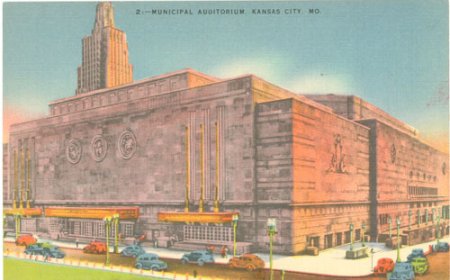

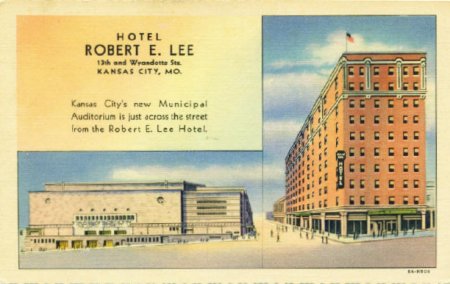
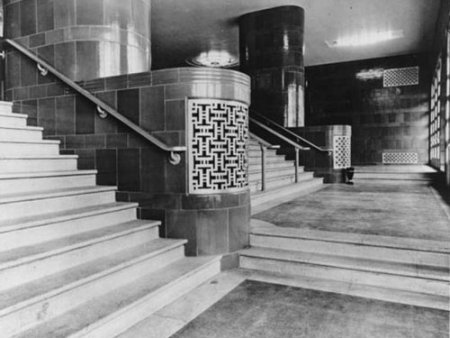

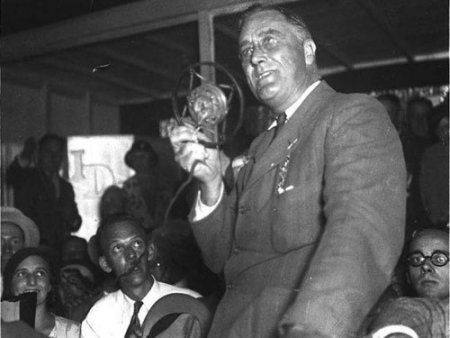
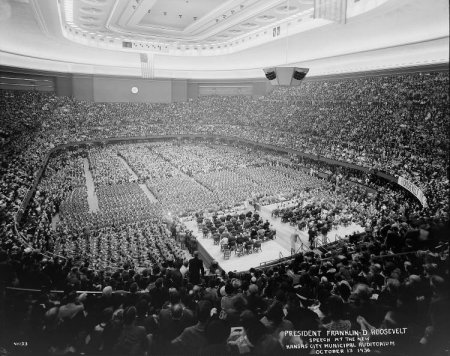
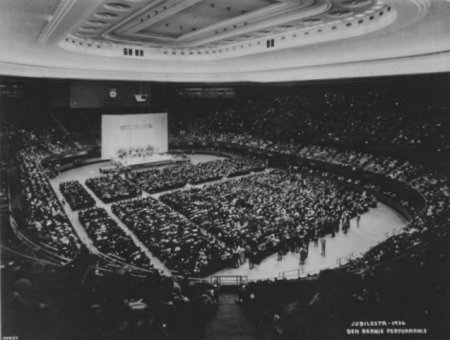
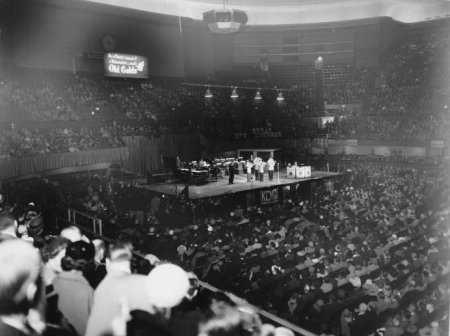
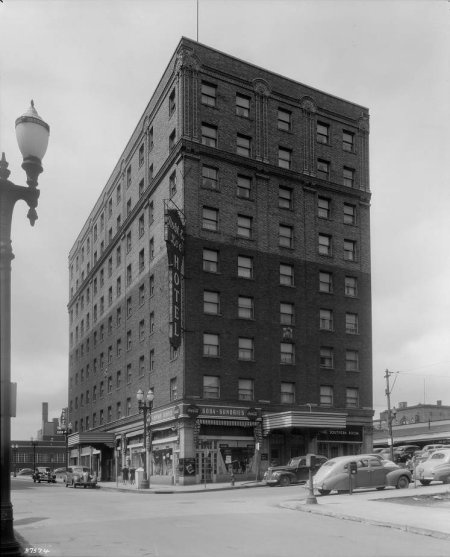
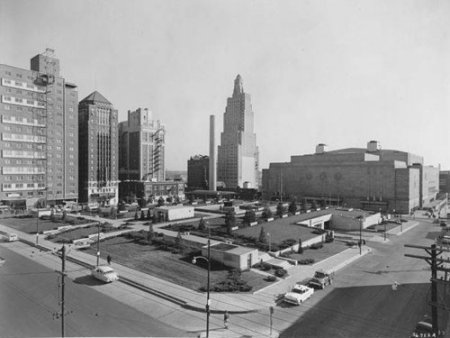
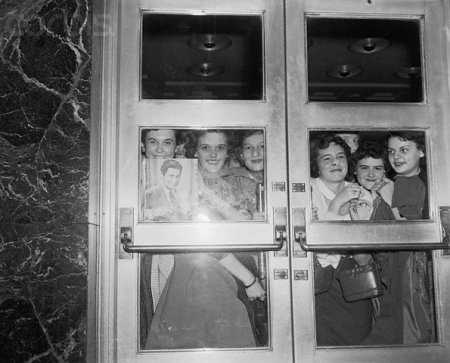
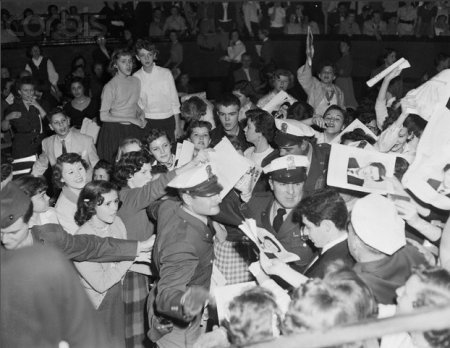
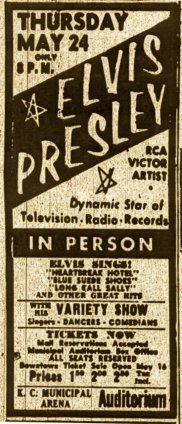

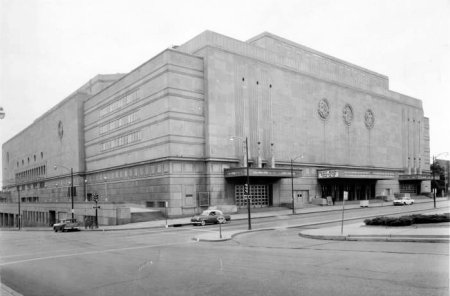
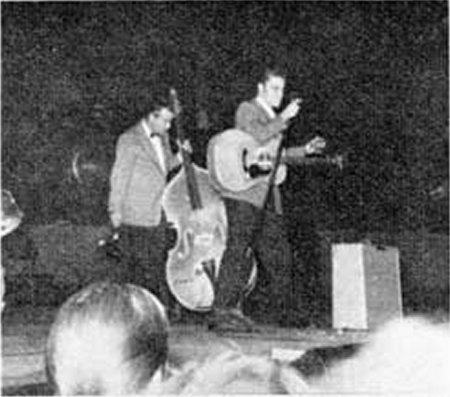

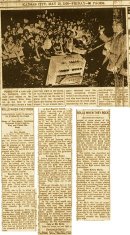 ROLLS WHEN THEY ROCK
ROLLS WHEN THEY ROCK